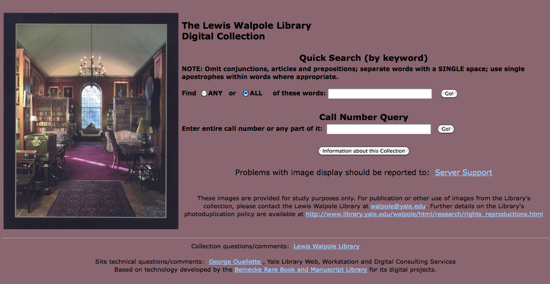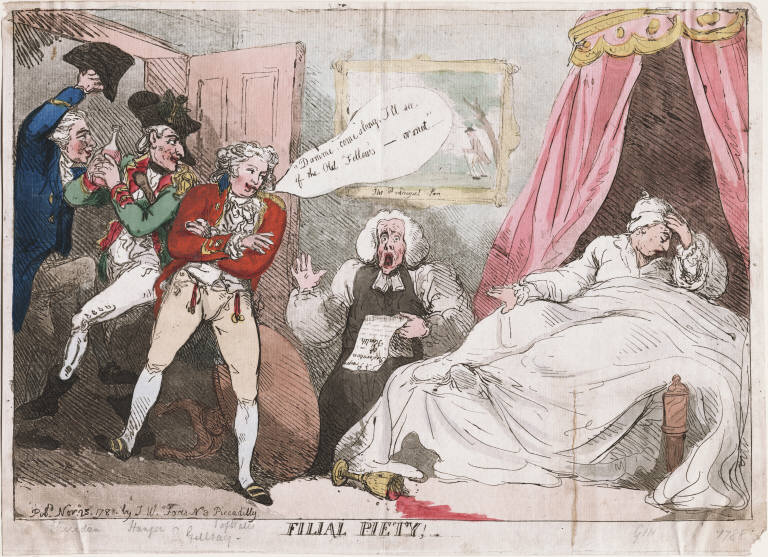
Image Credit: A Catalogue of 18th-Century British Mezzotint Satires in North American Collections
I thought I’d step back from the contemporary pop culture discussions
today to look into two archives with a more historical emphasis: the Lewis Walpole Library Digital
Collection and A Catalogue of 18th-Century British Mezzotint Satires in North American Collections.
Both of these collections offer extensive resources for instructors in
eighteenth-century literature, politics, art, and culture.
The Lewis Walpole Library, which contains over 11,000 digital images, focuses on the library’s “world-renowned collection of English caricatures and political satirical prints from the late-seventeenth through the mid-nineteenth centuries. Included are works by Bunbury, Woodward, Gillray, Rowlandson, and Newton, among others.” The Catalogue of 18th-Century British Mezzotint Satires in North American Collections intersects with the Walpole Library’s Digital Collection as the latter is one of the
former’s sources, but this websites indexes such satires by name and year.

Image Credit: Screenshot from The Lewis Walpole Library Digital Collection
In terms of usability, both websites lack some help. The catalogue’s index is useful to the
viewer who knows a particular print they’d like to find, or who is looking for
something from a specific title, but the site features no searching capacities. The Lewis Walpole Library Digital
Collection has a search feature which looks through the call number, the
artist, or the image’s title, but their images are not organized by important
keywords or popular figures in the images. A search for “Rowlandson” can turn up a number of prints by
this famous illustrator, but a careful search would need to be done to find the
particular one where he satirizes the Prince of Wales who, during the 1788
Regency Crisis when King George III was thought to be mad, schemed to take over
the throne.

Image Credit: The Lewis Walpole Library, Yale University
Since both collections deal with images held by research libraries and
museums (like the Metropolitan Museum of Modern Art), all of these images are under
copyright. Both websites are open to the public to use, and all of the images are available for personal use and even “study purposes,” so their use in the classroom should be fine.
What these websites might
help provide for students in rhetoric classrooms is the opportunity to analyze
visual material whose context is less familiar to them, but which was popularly
produced and reproduced to do specific cultural work. Since most of these prints are satires, they can be compared
in purpose and function to contemporary political cartoons in terms of their
strategies. For educators focusing
on the eighteenth-century, this material opens up and might indeed accompany a
study of the popular period literature.
I hope some of my readers here at viz.
will find this material useful for their classrooms.



Recent comments
2 years 29 weeks ago
2 years 44 weeks ago
2 years 44 weeks ago
2 years 50 weeks ago
3 years 4 weeks ago
3 years 4 weeks ago
3 years 4 weeks ago
3 years 6 weeks ago
3 years 6 weeks ago
3 years 6 weeks ago